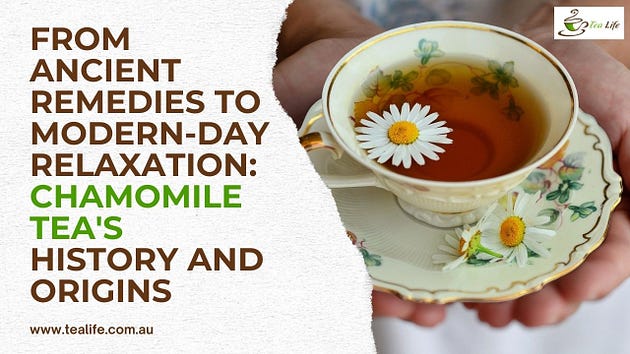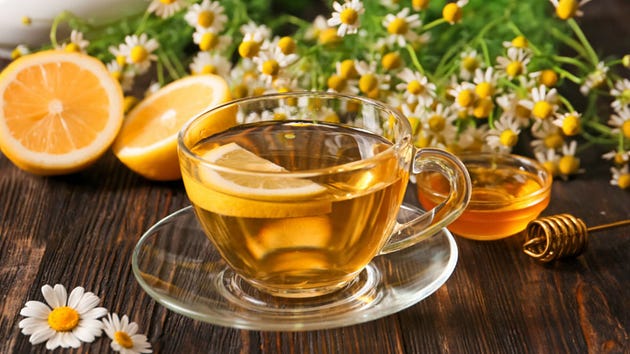From Ancient Remedies to Modern-Day Relaxation: Chamomile Tea's History and Origins

Renowned for its delicate, flowery taste and relaxing effects, chamomile tea For millennia, people have loved this herbal infusion; its background is as rich and aromatic as that of the tea. Let’s investigate the interesting trip chamomile tea travels from its ancient beginnings to its current part in our tea life.
Ancient Origins: Chamomile in Roman Egypt and Greece
With its first known use in ancient Egypt, chamomile has thousands of years of history. Using chamomile for its therapeutic qualities, the Egyptians treated illnesses including fever, inflammation, and digestive problems. Because of its golden hue and therapeutic properties, which reminded them of the sun, they even devoted chamomile to their sun deity, Ra.
The Romans also prized chamomile and used it in their everyday tea drinking. Their bath practices included it as a scent in addition to its therapeutic qualities. Roman doctors advised chamomile tea for its capacity to relax the digestive tract and for its relaxing properties. The basis for chamomile’s ongoing appeal was its medicinal qualities, which were known long ago.
Middle Ages Chamomile: A European Staple

Chamomile evolved as a mainstay of European herbal therapy in the Middle Ages. In monastery gardens, monks and herbalists cultivated chamomile to use its calming qualities for the treatment of many conditions. Reflecting the whole approach to health that defined medieval European medicine, chamomile tea was widely advised for sleeplessness, anxiety, and digestive problems.
Particularly the Anglo-Saxons gave chamomile great respect. Their “Nine Herbs Charm,” a classic cure combining nine holy plants to heal different ailments, contained it. This medieval respect for the adaptability and potency of chamomile guaranteed its ongoing usage and cultivation throughout Europe.
Chamomile’s Trip to the New World

Chamomile’s path continued beyond Europe. European immigrants introduced chamomile to the New World along with exploration and colonialism. Native American tribes, who included chamomile tea in their customary medical regimens, soon started using it as a popular cure.
The colonists themselves used chamomile tea for relaxation after arduous days of work and to cure prevalent illnesses. Herbal knowledge from many cultures helped to solidify chamomile’s position in American tea life, where it is now a cherished medicine and beverage.
Modern Day Relaxation: Twenty-first Century Chamomile
Chamomile tea is a must-have in homes all over nowadays. Those looking for a natural cure for stress and sleeplessness often choose it because of its mild, relaxing qualities. Modern herbal medicine still values chamomile’s anti-inflammatory and antioxidant qualities, hence it is a main component in many health products.
The popularity of chamomile has only grown as interest in natural and holistic health approaches returns. From health enthusiasts to working professionals, many individuals include chamomile tea in their daily tea life to relax and encourage a feeling of peace.
Inference
The history of chamomile tea is evidence of its adaptability and continuous attraction. From ancient Egypt to contemporary homes, chamomile has been prized for its pleasant taste and calming effects. Chamomile tea is a classic option whether your goal is to unwind after a demanding day or search for a natural cure for common diseases.
We at Tea Life honor the rich history and advantages of chamomile tea. Our carefully chosen chamomile combinations are meant to provide you with the finest of this age-old herbal cure. Use Tea Life to learn the relaxing properties of chamomile and improve your tea life. To investigate our selection of chamomile teas and choose your ideal mix, visit our website Sip, unwind, and enjoy the road with Tea Life.
.jpg)
Comments
Post a Comment